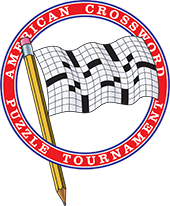This Time It's Crosswords (Not Cross Words) That Surface From Sondheim
Source: The New York TimesDate: September 16, 2011
Byline: Patrick Healy
This Time It's Crosswords (Not Cross Words) That Surface From Sondheim
For decades they have been an elusive collector’s item sought by puzzle fans and musical theater aficionados alike: The cryptic crosswords that the celebrated composer Stephen Sondheim created for New York magazine in the late 1960s and that were later compiled in a book that has long been out of print. But earlier this week some online chat sites devoted to puzzles began to buzz about a Web site that included scans of 19 crosswords that were apparently the Sondheim mother lode. “These are the gold standard for sure!” one commenter gushed on Facebook.
But are they the genuine Sondheim?
Yes indeed, Mr. Sondheim said in a telephone interview, after being told about the Web site and looking it over himself.
The puzzles began as a favor, Mr. Sondheim said, to help New York magazine get off the ground in 1968. His friend Gloria Steinem, who was writing for New York and was close to one of its founders, Clay Felker, knew of Mr. Sondheim’s love for games and asked him to create a puzzle page for the magazine.
“I said sure, as long as I could introduce cryptic puzzles to the American public,” Mr. Sondheim said.
Such puzzles were popular in England, and Mr. Sondheim based his contributions on cryptic crosswords that were popular in The Listener, a publication of the BBC. In an essay published in New York, Mr. Sondheim offered a description of his pastime:
“There are crossword puzzles and crossword puzzles. The kind familiar to most New Yorkers is a mechanical test of tirelessly esoteric knowledge: ‘Brazilian potter’s wheel,’ ‘East Indian betel nut’ and the like are typical definitions, sending you either to Webster’s New International or to sleep,” he wrote with trademark punch. “The other kind, prevalent in Great Britain but inexplicably nonexistent in the United States apart from The Nation and an occasional Sunday edition of The New York Times, is a test of wits. This kind of puzzle offers cryptic clues instead of bald definitions, and the pleasures involved in solving it are the deeply satisfactory ones of following and matching a devious mind (that of the puzzle’s author) rather than the transitory ones of an encyclopedic memory.”
There are seven basic kinds of clues, which he went on to describe as anagrams, multiple meanings, reversals, charades, container and contents, puns, and hidden clues. Mr. Sondheim ultimately stopped writing the page to focus on the music for his new show, “Company,” which opened on Broadway in 1970 and won Tony Awards for best musical and best score, among other categories.
Mr. Sondheim’s passion endured, though: He and the actor Anthony Perkins wrote the screenplay for “The Last of Sheila,” a 1973 murder mystery inspired in part by real-life scavenger hunts that the two men had organized for friends over the years. Recently he devised a game called “A Little Jurassic Treasure Hunt” through the American Museum of Natural History that guests will play next month at a fund-raiser for the caregiving group Friends in Deed.
Mr. Sondheim, who recently took public issue with plans for a revised “Porgy and Bess,” said that he had “no problems” with the cryptic puzzles appearing free for all on the Internet, saying “it’s fine to have more people learning about the games and enjoy them.” He said he was not sure who held the copyright to the puzzles; they were published together in 1980 in a spiralbound book titled “Stephen Sondheim’s Crossword Puzzles From New York Magazine.” A spokeswoman for the magazine said the publication believed that it did not hold the copyright to the crosswords but that Mr. Sondheim did.
As for the Web site, its creator remains unknown; a message sent on Wednesday to a contact e-mail address was not answered.

